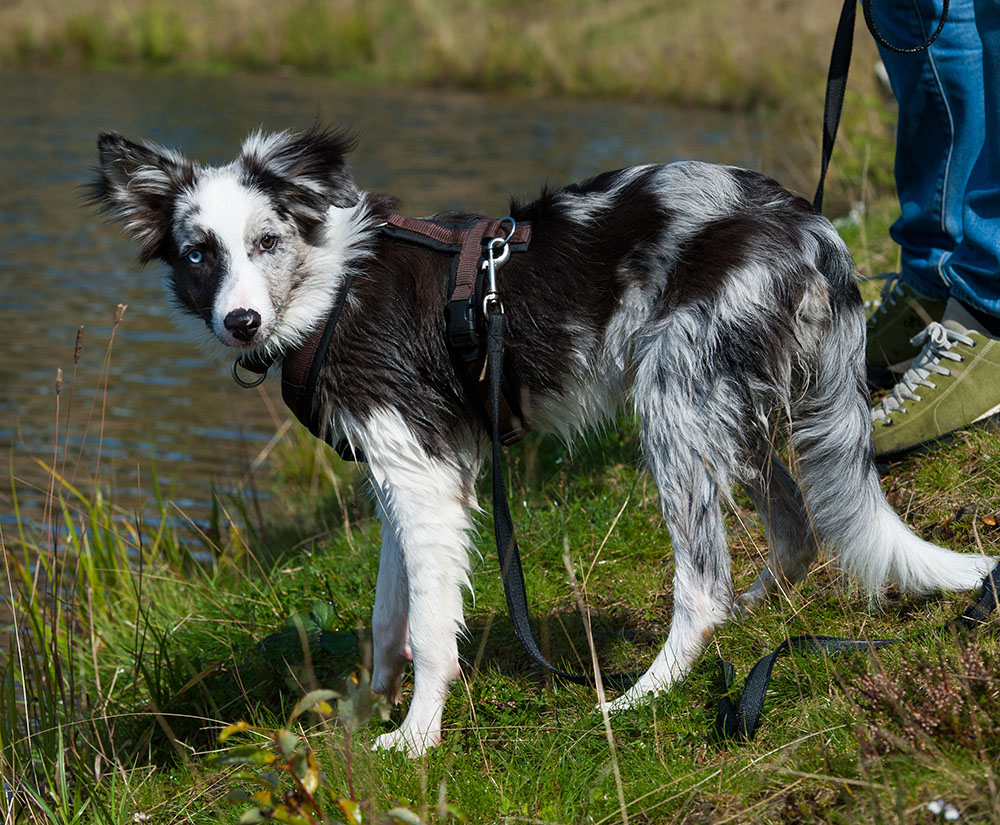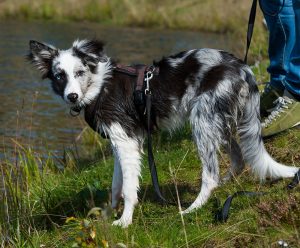

BORDER COLLIE LEAD TRAINING
Border collie lead training is very simple when you think about it in terms of how your dog or puppy thinks about it…. Border collies, and all dogs, only pull for one reason: they believe that it gets them where they want to go.
You step out of the front door and your dog pulls on the lead to start the walk – and the walk starts. The puppy pulls on the lead to get to the next interesting smell – and they get to it.

Border Collie Lead Training
Border collie lead training works on the very simple basis that, from the moment you start training, pulling on the lead will NOT get your dog to where she wants to go. Instead, the second that the dog pulls, you stand still. As soon as the lead goes slack, you go forward.
It really is as simple as that! Border collies learn quickly and this WILL work.
We offer a Loose Lead Training session for only £60 or 3 sessions for £170 for all training related to puppies, that will give you extra advice and support unique to your dog.
Sign up now!

Start as you mean to go on.
As soon as you open the front door or gate, and your puppy goes to run forward, shut the door/gate before she gets through. Try again. And again. Once your puppy is not attempting to rush through the door, you can give her an “ok” cue and step through with her. If the lead goes tight, immediately stop until it has gone loose, then take another step, and continue in this way until you can get to the end of the drive with a loose lead. Waiting until you have this calm behaviour before continuing with the rest of the walk sets your dog up for success by calming everything down.
It also helps if you have a game of something before the walk, such as tug or playing with a toy on a rope, so that the dog is a bit more tired and less like a bottle of pop waiting to explode before you start the training.
It often speeds up the process if you use treats while out walking. They must be VERY high-value treats as getting out and about is very stimulating and exciting for a dog, with many sights, smells and potentially scary things all going on. Such an overstimulating environment can make dogs relatively uninterested in treats unless they are very high value, such as cheese or sausage. They need to be cut up into very small pieces, no bigger than your small fingernail.
If your dog isn't "into" food, then there are other reinforcers you can use - get in touch with us to help.
Every time the dog stops pulling, even just for a second, use a reward word (or “marker”) such as “yes” or “yip” and give the dog a treat. The word makes the dog look round for the treat and he has to come back to your side to collect it. This helps to reinforce the no pulling.
However, to start with your puppy may not respond to treats at all as everything will be new. If this is the case, just proceed without, stopping whenever he pulls and continuing when he stops pulling.
Sometimes you need to just walk the dog, to pick the kids up from school, or to walk through the village or into town, and you can’t keep stopping whenever the dog pulls. This is fine – it happens. However, it’s very important that the dog is never allowed to pull to get to where it wants to go. So how do we ensure that the dog keeps learning while we go about daily life?
For these circumstances, in order to continue border collie lead training, we suggest using a harness for when you need to go out and can’t train the puppy. Harnesses with a front attachment are very good for stopping your dog from pulling. Having the harness on signals to the dog that this is a completely different situation to training when you are using a flat collar. Therefore, he differentiates between the two. SO long as he always learns that in a flat collar he must not pull, but in a harness it’s ok, then he will keep learning on the flat collar. Then, eventually, when he no longer pulls on the collar, you can do away with the harness altogether and you have your lead trained collie!
It is better if, while you are training, you don’t take the dog out on too many walks. This is why it’s ideal to start border collie lead training when your pup is very small before she can go out and before she has completed her course of inoculations.
If your dog is older and needs the exercise then, if possible, take them out in the car to somewhere where they can be offlead. Then train AFTER your walk when your dog is tired and less likely to pull. You can then reinforce this behaviour, setting your dog up to succeed rather than fail.
However, if you do need to take the dog out and don’t have the time to train, see the point above.
There is no necessity to use a cue when lead training a dog, because the lead itself is the cue. The dog will understand that when the lead goes on, he doesn’t pull. If you would like to train your dog to walk by your side in the heel position then that is a different exercise to loose lead training and we can help you with that.
